|
Click pictures for a larger version.
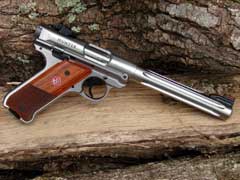
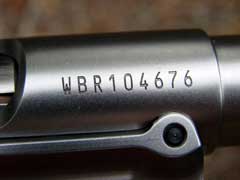
Serial number pays homage to William B. Ruger.
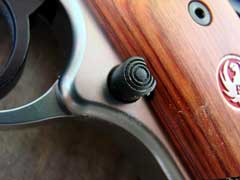
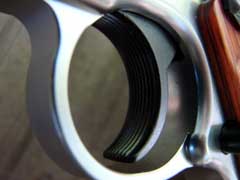
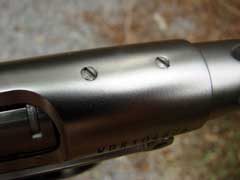
The receiver is drilled and tapped for an optics
base.
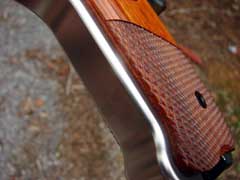
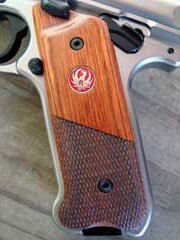
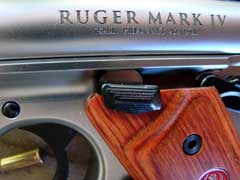
Redesigned bolt stop.
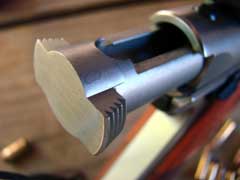
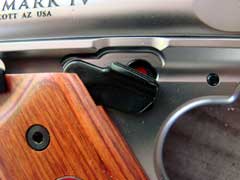
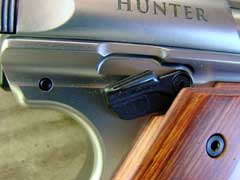
Ambidextrous manual safety levers.
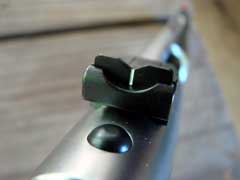
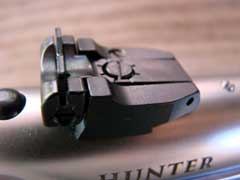
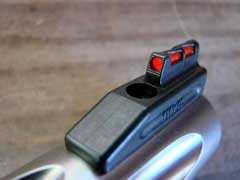
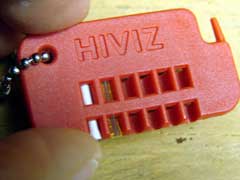
Excellent set of adjustable rear and HiViz front
sights.
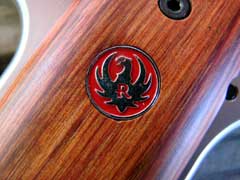
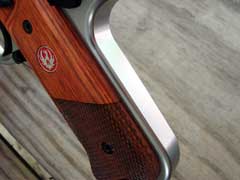
The smooth backstrap looks out-of-place on a Ruger 22
auto.
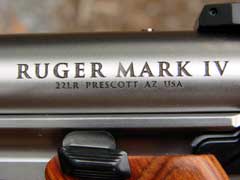
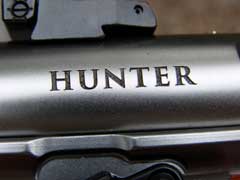

|
|
Americaís
best 22 Long Rifle semi-auto pistol just got better; a lot
better. The Ruger 22 Auto is the most-popular 22 LR pistol in
the world, as it has been for many years. There are other good
22 pistols on the market, and I own a few, but none have the
longevity, reliability, and popularity of the Ruger.
Before
we get into the new Mark IV, a bit of history is in order, for
those who are interested in such things. In 1949, Alexander
Sturm and William B. Ruger formed Sturm,
Ruger, & Company. On limited capital, they bought used
tooling, set up shop, and began producing an affordable
nine-shot 22 pistol, the Standard Auto. The Standard Auto was
unlike any other 22 pistol, in that the action was more like a
rifle action than a pistol action, having a bolt inside a
tubular receiver, as opposed to a slide atop a frame, as was
typical of other designs. This made for a very rugged and
reliable design, and the Ruger pistol proved to be accurate as
well. The tubular receiver was mounted atop a stamped-and-welded
grip frame, which housed the fire control parts and magazine.
This is the pistol that launched the Ruger brand, and the
company and product line have been growing ever since. Shortly
thereafter, long about 1951, Ruger introduced the Mark I Target
pistol. In this first generation, only the target model pistols
were designated Mark I. It was the same basic design as the
Standard Auto, but it wore a heavy, longer barrel, adjustable
sights, and had a better trigger. The Standard Auto and Mark 1
pistol enjoyed enormous popularity, while other brands fell by
the wayside. The pistol proved to be reliable, accurate, and
affordable, and most other 22 semi-auto pistols just could not
compete.
The
Standard Auto and Mark I pistols remained in continuous
production through 1981, with the pistol receiving significant
changes and becoming the Mark II in 1982. At this point, both
the fixed-sight Standard Auto and the Target Model pistols were
christened as the Mark II. The Mark II retained most of the
features of the earlier pistols, but added a bolt stop to hold
the bolt open on an empty magazine, and increased the magazine
capacity to ten. The Mark II pistol continued to be produced
through early 2005, with the 22/45
polymer-framed version being introduced in 1993.
In
2005, Ruger again made design changes to the 22 pistol,
designating the pistol as the Mark III. The Mark III saw the
introduction of a loaded-chamber indicator, a magazine
disconnect safety, and an internal key lock, all of which were
not particularly welcome by most shooters, but a popular change
was the moving the magazine catch from the heel of the grip
frame to the left side just behind the trigger guard, as most
Americans seem to prefer, and also featured a scalloped receiver
at the rear, to help facilitate the operation of the bolt,
making it easier for the shooter to grasp the ears of the bolt
for retraction. The Mark III pistols continued production into
2016, with many variations available, including stainless steel,
blued or aluminum alloy barrel/receiver units, mounted atop
stainless, blued, or polymer grip frames.
This
brings us to the most significant changes yet to the Ruger 22
Auto, now designated the Mark IV. I first saw a prototype of the
new Mark IV several months ago, and have been more than anxious
to see this pistol go into production. While shooters have
always loved the Ruger 22 pistol design, many have belly-ached
at the process required to disassemble and reassemble the
pistols for cleaning and maintenance. If done exactly right, the
pistol will sometimes, sometimes, go back together very smoothly
and easily. However, the process can be frustrating at times,
even when following directions closely. The mainspring housing
must be perfectly aligned with the hammer strut and receiver, or
it just ainít going back together, regardless of the size of
the mallet used to bang upon it or the colorfulness of the
vocabulary used to curse it. The Mark IV solves that aggravation
with the push of a button. Located just beneath the receiver at
the rear of the pistol is a black button that is pressed to
allow the receiver to tilt upward and away from the grip frame,
then lifting the barrel/receiver from the grip frame much like
breaking open a double or single-barrel shotgun. The bolt then
slides easily out of the receiver for cleaning. Those who have
experienced the frustration of disassembly/assembly with
previous Ruger pistols might want to stop reading and have a
good cry at this point, before continuing with the rest of this
review. I will admit that my eyes got a little wet when I first
experienced the new Mark IV. Other changes to the pistol include
the elimination of the loaded-chamber indicator and key lock
features, which were unpopular on the Mark III series. While the
magazine disconnect safety has been retained, it has been
redesigned, and the magazine is ejected sharply when the mag
release button is pressed.
One
of the most-endearing features of the new Mark IV, to me, is the
addition of an ambidextrous manual safety, making the pistol
user-friendly for us left-handed shooters, and the safety design
is much better for both right-handed and left-handed shooters,
being much easier to manipulate than the previous safety of the
past generations. I was born terminally left-handed, and for
many years have been hoping that the aftermarket would develop
an ambidextrous safety for the Ruger Auto, but it never
happened. Now, the Mark IV is much better-suited for left-handed
use.
While
the profile of the grip frame remains the same, the construction
is entirely different. For the past sixty-seven years, the grip
frame on most Ruger 22 pistols have been constructed of stamped
steel, welded together and fitted with the fire control parts,
with the trigger guard being a separate piece. That method is no
longer used. The Mark IV grip frame is machined from solid
stainless steel or aluminum, depending upon the finish of the
weapon, with the trigger guard being integral to the rest of the
grip frame. Stainless
pistols have a stainless grip frame, while blued pistols have a
lightweight aluminum grip frame, making the blued pistol about
six ounces lighter than comparable stainless pistols.
The
bolt stop has been redesigned for the Mark IV, making it easier
to use than the bolt stops on Mark II and III pistols. Internal
changes to the hammer, bolt, firing pin, and sear, along with
the elimination of the loaded-chamber indicator, makes the
pistol run smoother than before. Mark III magazines will also
work in the new Mark IV pistols, and the sights are the same, so
Ruger as well as aftermarket sights will work on the new pistol,
and it will also use the same optics mounts as the Mark III
pistols.
The
Mark IV pistol shown here is their top-of-the-line Hunter Model.
It features a six and seven-eighths inch heavy fluted barrel,
fiber-optic front with adjustable rear sights, and checkered
wood laminate grip panels. The pistol comes supplied with extra
fiber-optic sight pins of various colors. The Mark IV Hunter is
beautifully finished in a satin stainless, with black controls
and sights. The pistol is primarily steel, and has a good heft
to it, weighing in on my scale at 43.8 ounces, with an empty
magazine in place. The two supplied ten-shot magazines are made
of blued steel, and load easily to capacity, with the aid of a
button attached to the follower. Like all previous generations
of this pistol, the rigid barrel/receiver aids greatly in the
pistolís accuracy, and the steel bolt reciprocates within the
receiver, ejecting the spent cartridge case and chambering a
fresh cartridge from the magazine. The pistol feels good in the
hand, and the smooth, uncluttered backstrap looks very unusual
to my eyes, which have been looking at previous generations of
Ruger autos for decades. The bolt stop and safety levers are
easy to manipulate, as is the magazine release. Being
left-handed, this pistol is much easier to operate for me than
previous Ruger 22 Auto pistols. The pistol feels better, looks
better, and operates easier than the previous generations of the
Ruger auto, and disassembling for cleaning is now a delight
instead of a chore.
Specifications
for the Mark IV Hunter pistol are listed in the chart below.
Weight is listed in ounces. Trigger pull is listed in pounds of
resistance. Linear dimensions are listed in inches.
| Chambering |
22 Long Rifle |
| Weight with empty chamber |
43.8 ounces |
| Trigger Pull |
4.45 pounds |
| Barrel Length |
6.88 inches |
| Barrel Diameter |
0.872 inch |
| Overall Height |
5.35 inches |
| Overall Length |
11.1 inches |
| Grip Thickness |
1.19 inches |
| Frame Width |
0.66 inch |
| Receiver Diameter |
0.9 inch |
| Maximum Width |
1.19 inches |
| Trigger Reach |
2.62 inches |
| Magazine Capacity |
10 |
| Magazines Supplied |
2 |
| Accessory Rail |
No |
| Magazine Disconnect |
Yes |
| Thumb Safety |
Yes |
| Grip Safety |
No |
| Accessories |
Cable Lock,
Instructions, Extra Fiber Optic Sight Pins |
| MSRP as of September 2016 |
$729.00 US |
I
fired the Ruger Mark IV Hunter to check for function, velocity,
and accuracy with a variety of ammunition. I fired thirteen
different types and brands of 22 Long Rifle ammunition, to check
the pistol for reliable function, and eleven different types to
record velocities. I fired six different types of ammunition
with the pistol secured into my Ransom
Master Series machine rest to test for accuracy at a
distance of twenty-five yards, firing five-shot groups.
Velocities are listed in the chart below, and are listed in
feet-per-second (FPS). All velocity and accuracy testing was
done at an elevation of 541 feet above sea level, with an air
temperature hovering around the eighty-degree Fahrenheit mark,
with a relative humidity of fifty-five percent. Solid is a
round-nose lead bullet. HP is a lead hollowpoint bullet. Bullet
weights are listed in grains.
| Ammunition |
Bullet Weight |
Velocity |
| Geco Solid |
40 |
1048 |
| Wolf Match Solid |
40 |
997 |
| Norma Tac-22 Solid |
40 |
908 |
| Remington Yellow Jacket HP |
33 |
1221 |
| PMC Match Solid |
40 |
915 |
| Remington Subsonic HP |
48 |
855 |
| Federal Premium Solid |
40 |
1048 |
| Federal Bulk HP |
36 |
1020 |
| Winchester Match Solid |
40 |
1119 |
| CCI Mini-Mag Solid |
40 |
1137 |
| Winchester Wildcat Solid |
40 |
1001 |
Functioning
of the Mark IV Hunter was flawless, as expected, with one
exception. Every cartridge fed, fired, and ejected perfectly,
except for a small box of Armscor 22 LR that I found. About half
of the cartridges from that box would not fire. They showed a
good firing-pin mark on the rim, so it was certainly no fault of
the gun. Just some bad ammo. The trigger released with just a
bit of travel, with just under four and one-half pounds of
resistance, as measured on my Lyman digital scale. Accuracy was
superb! The largest group fired at twenty-five yards measured
just one and one-half inches across. That is very good accuracy,
but again, that was with the Geco ammunition, and other brands
did much better. The PMC Match ammo grouped into one-quarter
inch for five shots, repeatedly, and Wolf Match did almost as
well. This pistol is capable of shooting with the best. I would
love to get my hands on some other brands of match ammo, such as
the CCI Green Tag, but I have not seen any of that for sale in a
long time. These
days, we shoot what we can get.
I
have a few Ruger 22 Auto pistols, from each generation. I have
one old pistol, which I treasure, that was made very early in
the production. It is a Standard Auto, serial number 132. I also
have another early red eagle Standard Auto and a red eagle Mark
I, built in 1951, as well as a Mark II 50th
Anniversary pistol, a Mark II Target pistol, and a couple of
Mark III pistols. They each function like brand new, and none of
them is problematic. The design has withstood the test of time,
and this new Mark IV Hunter is the best of them all. I am
anxious to get a 4 ĺ inch blued pistol, as it should be a few
ounces lighter than my old Standard Auto, which can then be
retired from field use.
At
this time, the Mark IV is not approved for sale in California
nor Massachusetts, which is a shame. There are lots of good
people there who deserve better government than they are
receiving. Suggested retail pricing on the Mark IV pistols will
be about the same as for comparable Mark III pistols, running
from an MSRP of about $429 US for the Standard model, to $729 US
for the Hunter, at the time of this review.
The
new Ruger Mark IV Hunter, along with the other variations of the
new Mark IV, should prove to be worthy successors to the
legendary line of Ruger 22 Auto pistols. If not for the success
of that early Standard Auto back in 1949, today there would most
likely be no Sturm, Ruger, & Company, and shooters would be
without many fine firearms. I know that my collection would
certainly be missing several good guns. The new Ruger Mark IV is
the best generation of the most-successful 22 semi-automatic
pistol on the planet, and should continue to serve shooters for
many years.
Check out the extensive line of Ruger
firearms and accessories online at www.ruger.com.
To order the new Mark IV pistol online, click
on the GUN GENIE at www.galleryofguns.com.
To find a Ruger dealer near you, click on the
DEALER FINDER at www.lipseys.com.
To order quality 22 Long Rifle ammunition, go
to www.luckygunner.com and www.midsouthshooterssupply.com
.
Jeff
Quinn
  
Got something to say about this article?
Want to agree (or disagree) with it? Click the following link to
go to the GUNBlast Feedback Page.
|
|
Click pictures for a larger version.
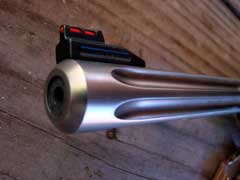
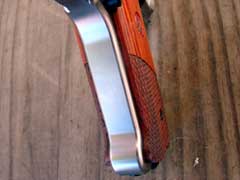
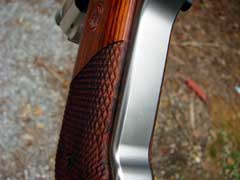
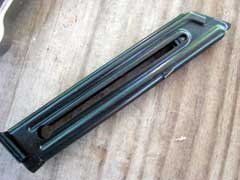
The Mark IV uses Mark III magazines.
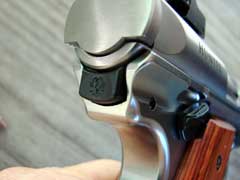
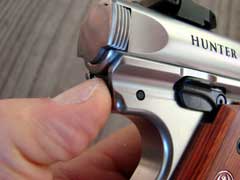
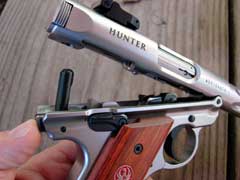
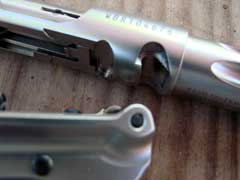
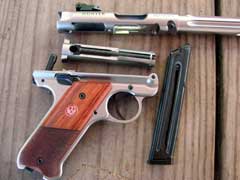
Disassembly is quick and easy.
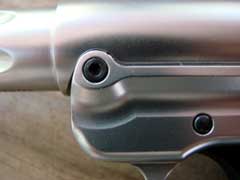
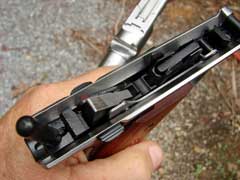
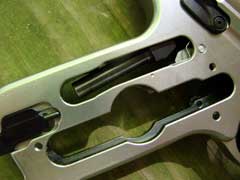
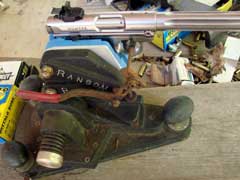
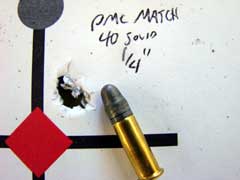
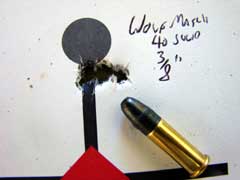
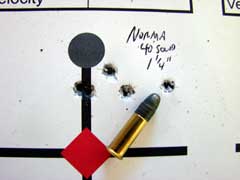
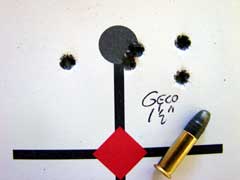
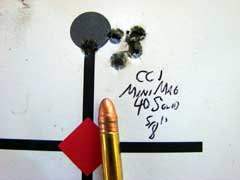
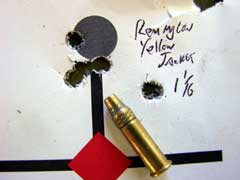
Accuracy testing at twenty-five yards.
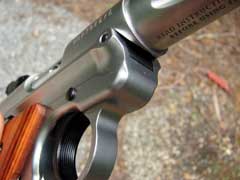
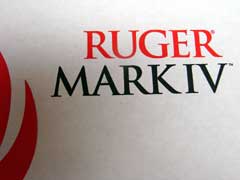
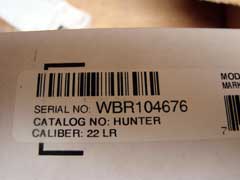

|
![]()